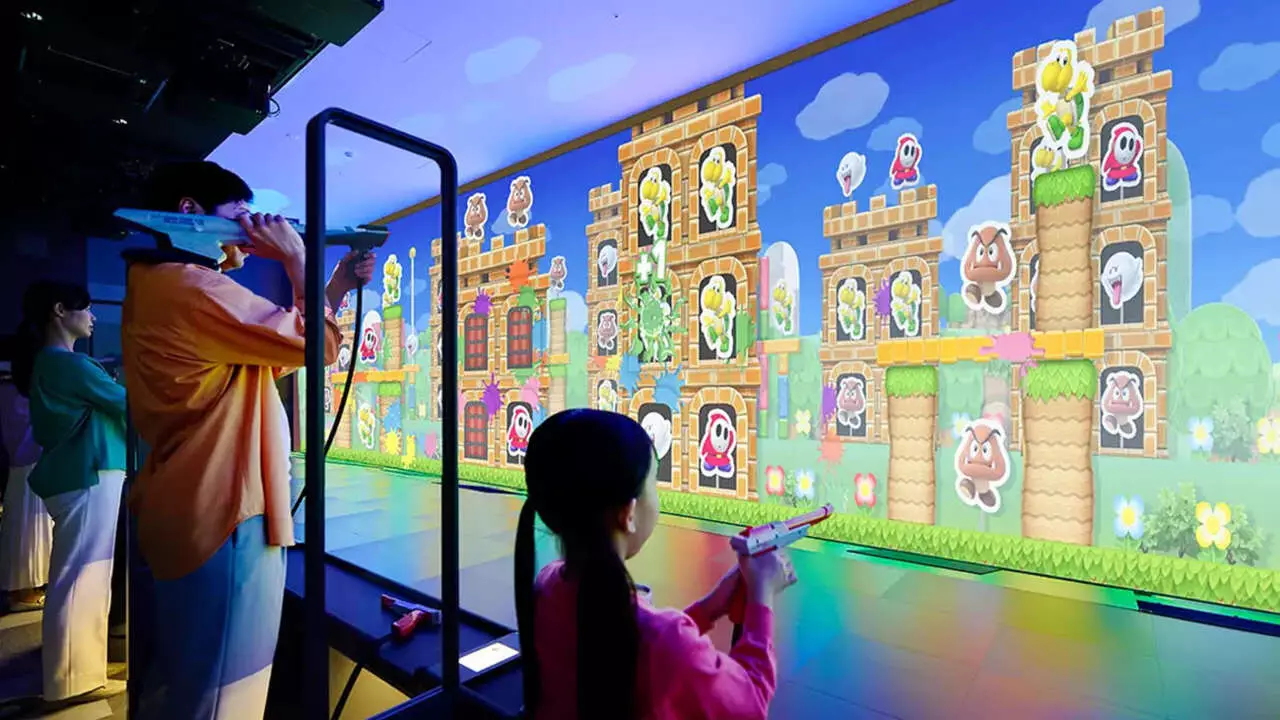The Nintendo Museum in Kyoto has made a significant splash in the gaming community since its recent opening, attracting enthusiasts and casual visitors alike. This modern marvel not only showcases Nintendo’s rich history in gaming but also acts as a testament to its influence on popular culture. With its carefully curated exhibits detailing the evolution of beloved franchises and iconic characters, the museum serves as a pilgrimage site for long-time Nintendo fans as well as an introduction for newcomers to the gaming world.
However, the excitement surrounding the museum has not been without its challenges. The influx of visitors eager to experience the Nintendo legacy has caused a frenzy surrounding its exclusive merchandise. Limited-edition items, like controller-shaped cushions and keychain collections, have generated a surprising market dynamic that highlights the impact of scalpers in today’s digital age. This situation raises questions about the relationship between nostalgia, consumerism, and the ethics of merchandise trading in fandom communities.
Within mere days of the museum’s inauguration, reports emerged of scalpers taking advantage of the hype, listing exclusive merchandise at exorbitant prices—some items reportedly reaching nearly $500 on platforms like eBay. Such practices reflect a broader trend in the marketplace where rarity and demand intersect, often to the detriment of genuine fans who wish to acquire these tokens of their beloved gaming heritage. In a bid to combat this troubling trend, the museum has implemented restrictions, allowing only one item per customer to be purchased. While this decision may help mitigate the problem, it also serves as a reminder of the complex dynamics at play in contemporary fandom.
Despite the limitations placed on merchandise purchases, the reality is that each restriction can inadvertently heighten demand. The allure of exclusivity often fuels enthusiasm, and as fans become aware of the limited nature of certain items, they may feel urgent and compelled to obtain them, igniting further interest in the museum and its offerings.
Beyond the controversies surrounding merchandise, the Nintendo Museum embodies a rich repository of historical significance. Visitors are treated to a narrative that spans generations, chronicling the technological innovations and cultural shifts that have marked Nintendo’s journey from its humble beginnings as a playing card company to its status as a gaming giant. For many, this immersive experience transcends mere entertainment; it’s a reflection of their personal journeys with gaming. Industry veterans and newcomers alike can find connections to their own lives within the nostalgic displays and interactive exhibits, solidifying the museum’s role as a vital cultural landmark.
Dan Ryckert’s enthusiastic review promising a “deeply personal experience” encapsulates the sentiment shared by many who visit—it’s not just about gaming history, but also about the emotional impact these experiences have had on individuals over time. The Nintendo Museum is more than an exhibition; it is a celebration of shared culture, memories, and milestones that have shaped the gaming landscape.
Looking forward, the Nintendo Museum undoubtedly faces challenges, particularly regarding how it manages the intersection of commercial interest with fan engagement. As demand continues to grow—and with tickets already claimed through the end of the year—it will be essential for the museum to find a balance between fostering access and preserving the value of its memorabilia. The journey of this gaming icon reflects broader themes in our society; the dynamic interplay of culture, nostalgia, and commerce will shape how we engage with our shared histories. As the museum solidifies its position within Kyoto and the global gaming community, it’s a fascinating time to observe the evolution of such a beloved institution.

